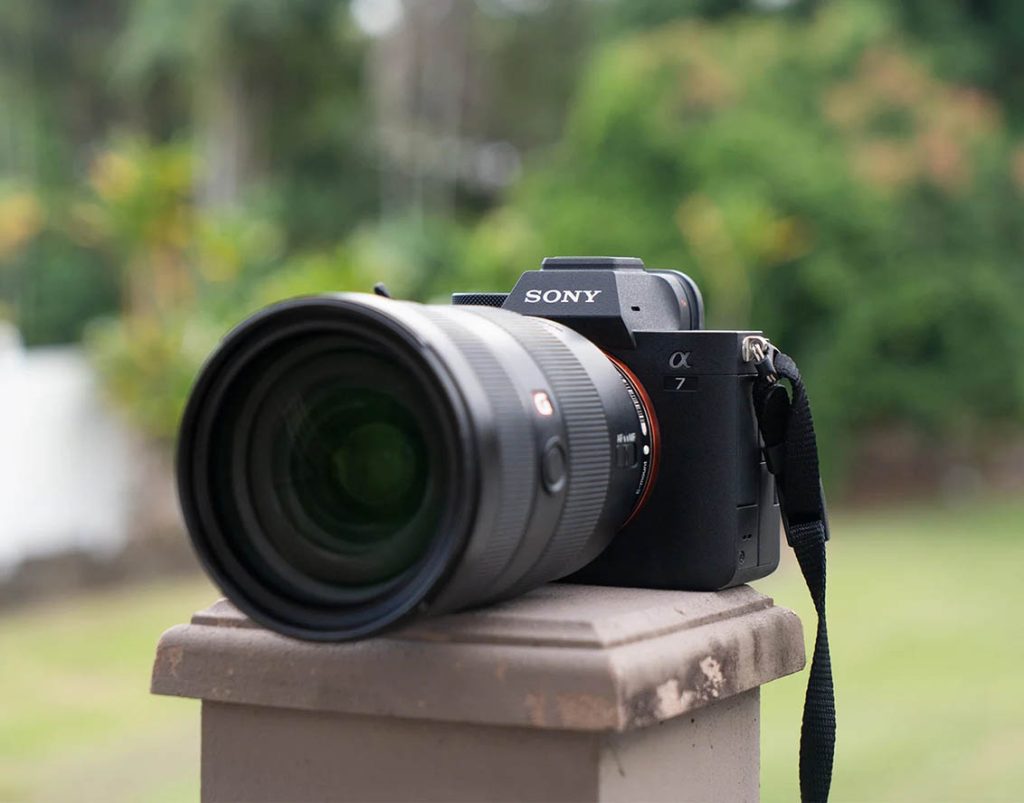I often get asked one common question: What exactly is a mirrorless camera? Why has it become such a buzzword in the photography world over the past few years? And at the same time, why are there still so many people holding on to their digital single-lens reflex (DSLR) cameras? If you’re curious about these topics, you’re in the right place. I’ll break down what a mirrorless camera is, its advantages and disadvantages, and why it’s considered the future of photography.
What Is a Mirrorless Camera?
A mirrorless camera is, as the name suggests, a type of camera that lacks the mirror mechanism found in traditional DSLRs. In a DSLR, light enters the lens and gets reflected by a tilted mirror into an optical viewfinder. When you press the shutter button, the mirror flips up, allowing light to reach the camera’s sensor for image capture. While this system provides a clear optical view of the scene, it also adds complexity and bulk to the camera’s design.
In contrast, a mirrorless camera eliminates the mirror and optical viewfinder entirely. Light passes through the lens straight to the digital sensor, which then displays the image in real-time on an electronic viewfinder (EVF) or LCD screen. This streamlined design brings several notable advantages:
- Smaller and Lighter
Without the mirror mechanism, mirrorless cameras are typically more compact and lightweight, making them ideal for travel and on-the-go shooting. - Real-Time Previews and Precise Focusing
The electronic viewfinder allows you to preview exposure, white balance, and depth of field in real-time, reducing the trial-and-error process. Mirrorless cameras also boast advanced focusing systems, often combining contrast-detection and phase-detection technologies for faster and more accurate autofocus. - Lower Risk of Mechanical Issues
Without a mechanical mirror, there’s less risk of wear and tear, which is especially beneficial for photographers who shoot frequently.
The Advantages of Mirrorless Cameras
- Cutting-Edge Autofocus Technology
Mirrorless cameras use their image sensors for focusing, which means they can offer superior autofocus performance, particularly for video and dynamic subjects. Features like eye-tracking autofocus are now common in many models. - Silent Shooting and Faster Burst Rates
The electronic shutter in mirrorless cameras enables silent shooting, which is invaluable for discreet situations like weddings or wildlife photography. Additionally, the absence of a mirror mechanism allows for higher burst shooting speeds. - Superior Video Capabilities
Mirrorless cameras often excel in video recording, supporting high resolutions like 4K or even 8K, along with professional-grade autofocus for smooth focus transitions during video shoots. - Continuous Innovation
Mirrorless cameras are at the forefront of technological advancements. Brands like Sony, Canon, and Fujifilm consistently introduce cutting-edge features, including in-body stabilization, intelligent scene recognition, and enhanced connectivity options.
Why Do People Still Use DSLRs?

Despite the growing popularity of mirrorless cameras, DSLRs still have a loyal following. Here’s why some photographers prefer sticking with their trusted DSLRs:
- The Advantage of Optical Viewfinders
Many photographers appreciate the direct, unaltered view provided by an optical viewfinder. It offers a more natural experience and avoids potential delays or resolution limitations seen in electronic viewfinders. - Durable and Rugged Design
DSLRs are often built with robust materials, making them ideal for challenging environments. For extreme weather or demanding outdoor shoots, a DSLR’s durability remains unmatched. - Longer Battery Life
Since DSLRs don’t rely on power-hungry electronic viewfinders, they typically offer better battery life, which is crucial for extended shoots or trips. - Wide Lens Selection
DSLRs have been around for decades, and their ecosystems offer a vast array of lenses to choose from. Photographers who’ve already invested in high-end DSLR lenses may find it costly to switch to a mirrorless system. - Cost-Effectiveness
DSLRs often provide great value for money, particularly for beginners or those on a budget.
The Future of Both Camera Systems
As technology evolves, most camera manufacturers are shifting their focus toward mirrorless systems. Brands like Nikon and Canon have released numerous mirrorless models in recent years while reducing their investments in DSLR development. However, DSLRs are unlikely to disappear entirely anytime soon, especially in professional and niche markets.
Mirrorless cameras seem poised to overtake DSLRs not just because of their modern features but also their compatibility with emerging technologies like smartphones and artificial intelligence. We’re already seeing brands like Sony introducing AI-enhanced capabilities, such as automated scene detection and intelligent post-processing tools.
Recommendations: Two Outstanding Mirrorless Cameras

After exploring countless models, here are two highly recommended mirrorless cameras that cater to different needs:
- Sony Alpha 7 IV
Sony’s Alpha series leads the mirrorless market, and the A7 IV is a versatile full-frame camera perfect for hybrid shooters who dabble in both photography and video. With a 33MP sensor, real-time eye tracking, and excellent low-light performance, it’s a powerhouse for almost any creative task. - Fujifilm X-T5
The Fujifilm X-T5 stands out as a top-tier APS-C mirrorless camera. It boasts a 40MP sensor and Fujifilm’s signature film simulation modes, making it a favorite for photographers who prioritize vibrant color profiles and retro aesthetics. It’s an excellent choice for street photography and travel.
Mirrorless cameras represent the future of photography, but DSLRs still hold a special place for those who value their unique qualities. Choosing between the two depends on your specific needs, budget, and preferences. Whether you’re drawn to the modern innovations of mirrorless systems or the timeless reliability of DSLRs, the most important thing is finding the right tool to capture your vision and tell your story.



